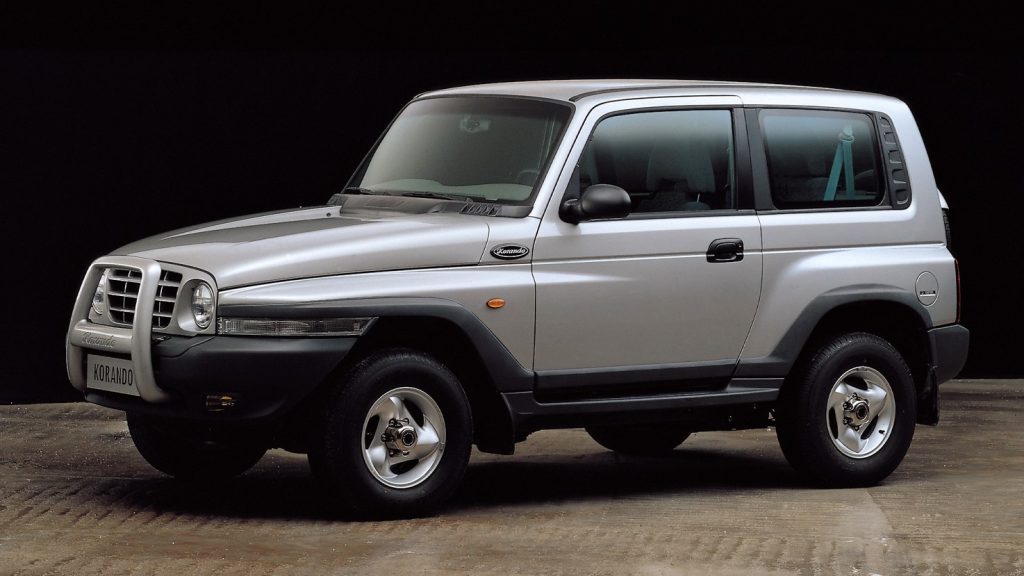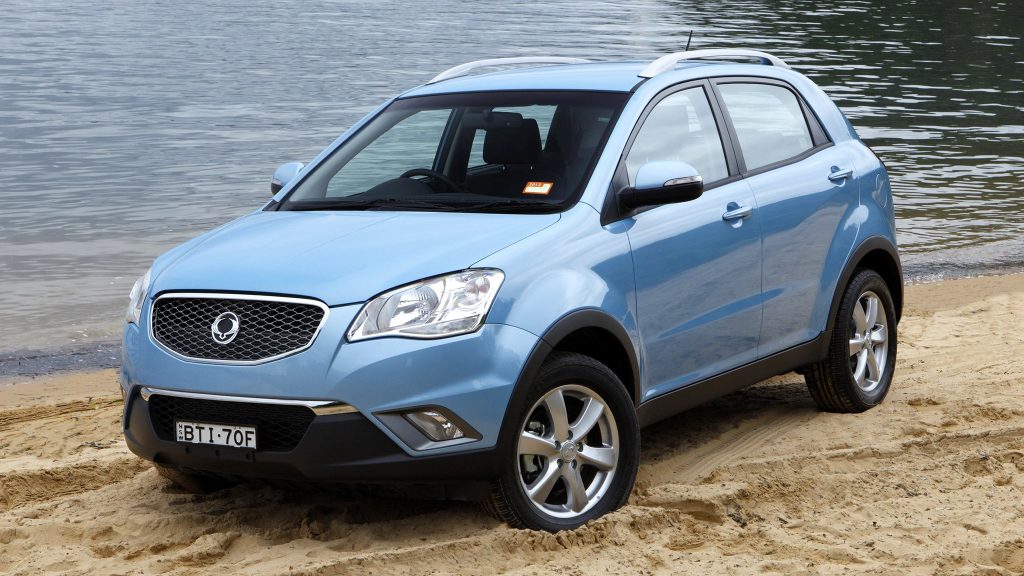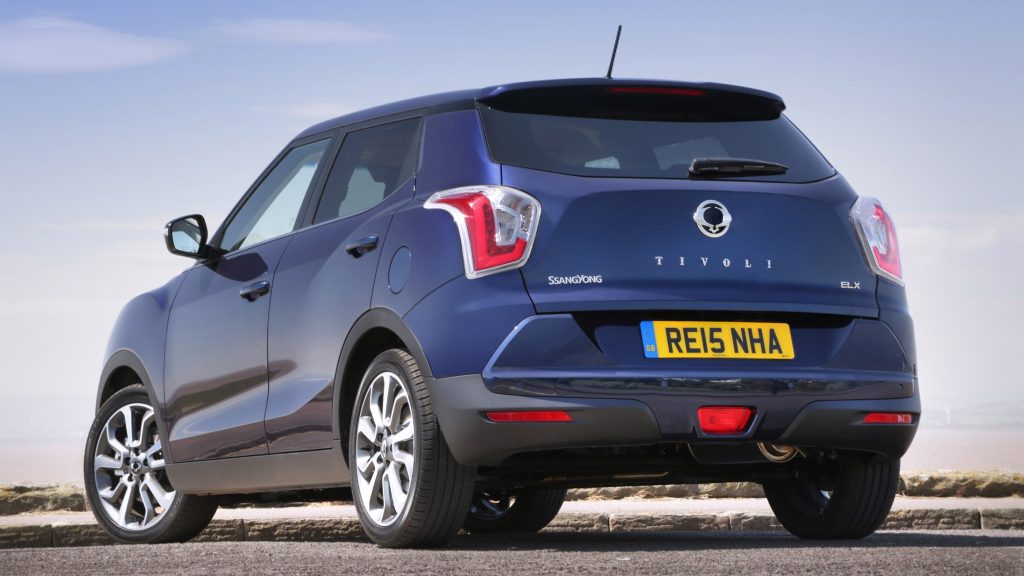Back in the 2000s, the Korean automaker offered a whole line of full-size models which would have made the Pontiac Aztek feel at home

Every automaker has at least one model in its history which everyone considered unappealing. I know that beauty is a subjective matter. Besides, I am sure that there surely is at least one person who truly appreciates how those cars look. The thing is, having such a low number of fans is not really what a car model needs to prosper.
Developing a new car requires millions of dollars and years of hard work. Thinking of that, it becomes difficult to imagine that such a flawed idea can get the green light for production. Nevertheless, the Internet has many posts featuring models like Chevrolet Agile, Fiat Multipla, Ford Scorpio, Pontiac Aztek and Renault Avantime.
It is easy to imagine that, whenever that happens, the company does its very best to correct whatever went wrong. But what if it does not? What if there was an automaker which had not one, but an entire lineup that people considered ugly? Yeah, that was SsangYong in the 2000s. And that is what this article is about.

What made SsangYong cars ugly?
The Musso was the automaker’s first proprietary design. While it fit quite well in the 1990s standards, the 1998 facelift brought the first issues. The renewed headlights resemble sad eyes and the radiator grille has no visual connection with the rest of the region; actually, it seems to have been crudely transferred from a Mercedes-Benz car.
The second Korando used a shortened version of that model’s platform, which is a typical solution in this industry. That wedge-shaped hood ending on grille and headlights à la Jeep Wrangler are problematic by themselves. However, making the turn lights so long and the bulge above the front wheels so thick results in a visually heavy front end.
SsangYong design took a breath of “normality” in the turn of the century. The Chairman used a Mercedes-Benz chassis and aimed at a conservative design which ended up looking like a knockoff S-Class. The Rexton was an Italdesign creation and had much more visual harmony, although we could also easily consider it inexpressive.

Did SsangYong come to its senses?
Not at all. While the Actyon was one of the first coupé SUVs ever, it did not do the category any favors: the radiator grille was quite big, yet the bulging hood supressed it; the headlights’s irregular shape looks like they are poking their way out of the body; and making the trunk lid visually empty only makes the rear end look excessively tall.
When it comes to the Kyron, what about noticing it has four air intakes on the front, each one of a different size, style and shape? On the side, borrowing the Actyon’s doors forced the rear glasses to be too tall. The grand finale, however, is the tail lights: too small and visually disconnected. They look like medieval shields embedded in the body.
Now, if you have heard the slightest reference to SsangYong cars before, you probably have already heard of the apex when it comes to its design in the 2000s. The Rodius, a full-size MPV released in 2004. Ken Greenley created the original car striving to “capture the essence of a luxury yacht”. The problem is, could you actually see that?

“Put together by three blind mice”
Up front, both main and auxiliary lights are generic enough to call attention to the grille, which people have nicknamed “pot-belly”. Things start fairly well on the sides; the front portion looks as clumsy as that of any other multi-purpose car available back then. At that time, the market had already lost interest in minivans but had not fallen in love with SUVs yet.
The real problem is the rest. The intention to simulate a yacht’s rear platform could have easily been executed using a spoiler, but no. SsangYong depressed the rear quarter windows into an Aztek-like fastback (not the best inspiration to use…), and make room to additional quarter windows. The latter were elevated, and flowed into the rear glass.
I could talk about that chrome bar that looks like as if it fell over the tail lights and tore them. But I am sure you have already understood the idea. The “Odious with an R”, as another news outlet labeled it, yielded such disgust that spent its years catering mostly to professional drivers who chose to only see its value-oriented qualities.

Was that the end of it?
Fortunately, yes. SsangYong ended that decade performing a comprehensive reinvention of its lineup, so all those models were either redesigned or simply replaced. Nevertheless, they all taught us a valuable lesson. After all, it is easy to discuss car design using successful examples; the problem is to understand what is failure so as to avoid it.
The main issue we can pinpoint is harmony. It is not about having everything round or boxy at once, but connected; otherwise, each part calls attention to itself. The sense of excessive information is fatal to the design of any product because it distresses the observer. Looking at it becomes unpleasant and even annoying as time passes.
When it comes to individual parts, we have to repeat that beauty is subjective. The problem is that unusual solutions require extra care: sometimes, it is just not possible to make them work. Concept cars are a common situation where that happens: much is “lost in translation” to the production model because of its stricter overall standards.

As I did my best to explain, SsangYong provided a precise practical example of what makes a car aesthetically unappealing. Nevertheless, there is so much to discuss about this side of car design that I would love to write more about it in the future. Would you be interested in that? Share your thoughts and opinions using the comment button!
Danillo Almeida has explored his passion for cars in two distinct ways. The first one is his graduation course in Mechanical Engineering, which will hopefully lead to a job position in the field. The other one is expressing his knowledge and opinions on the matter through writing. Almeida has already contributed to blogs, stores, and websites in general writing automotive content in many formats.



